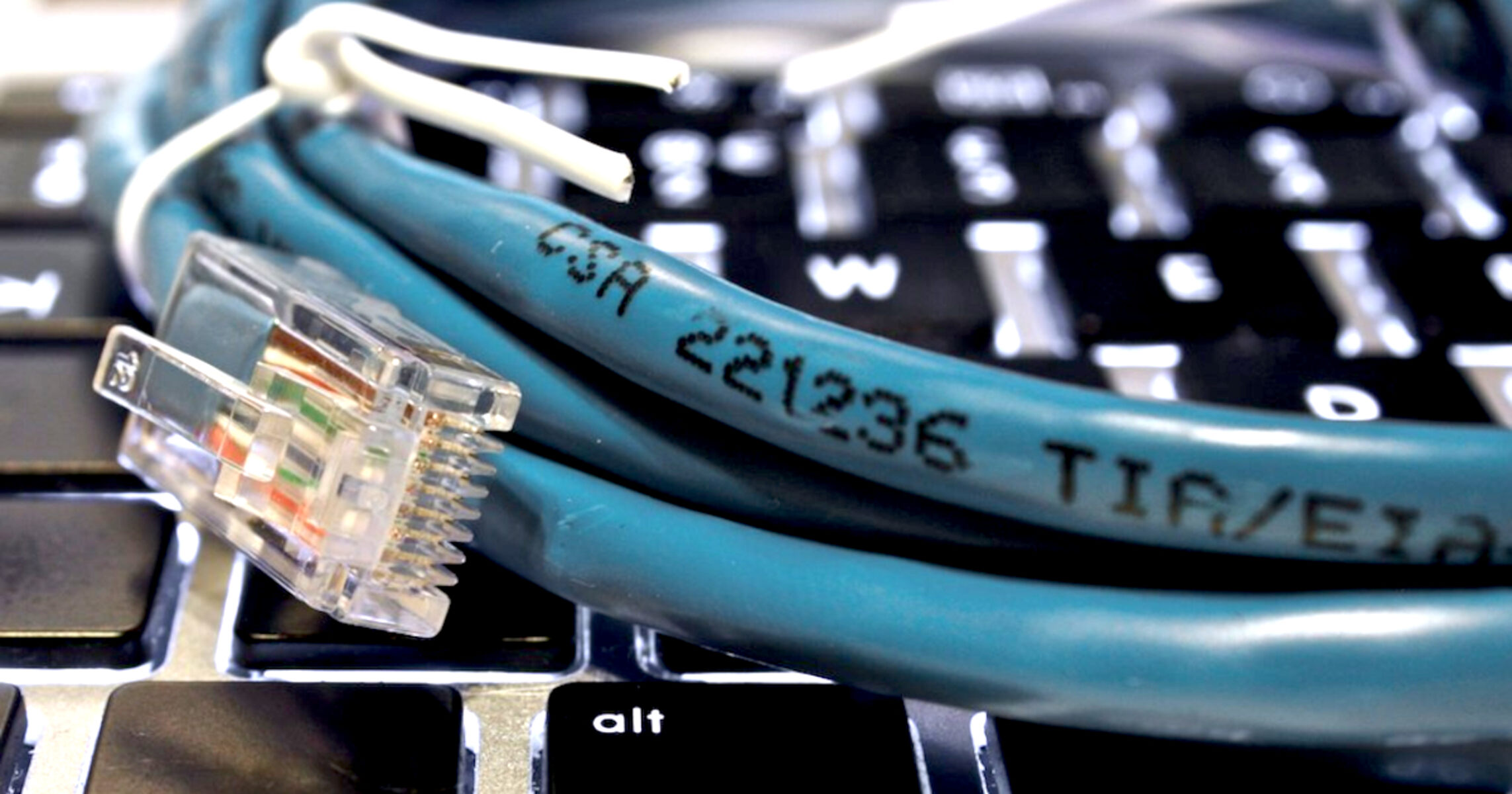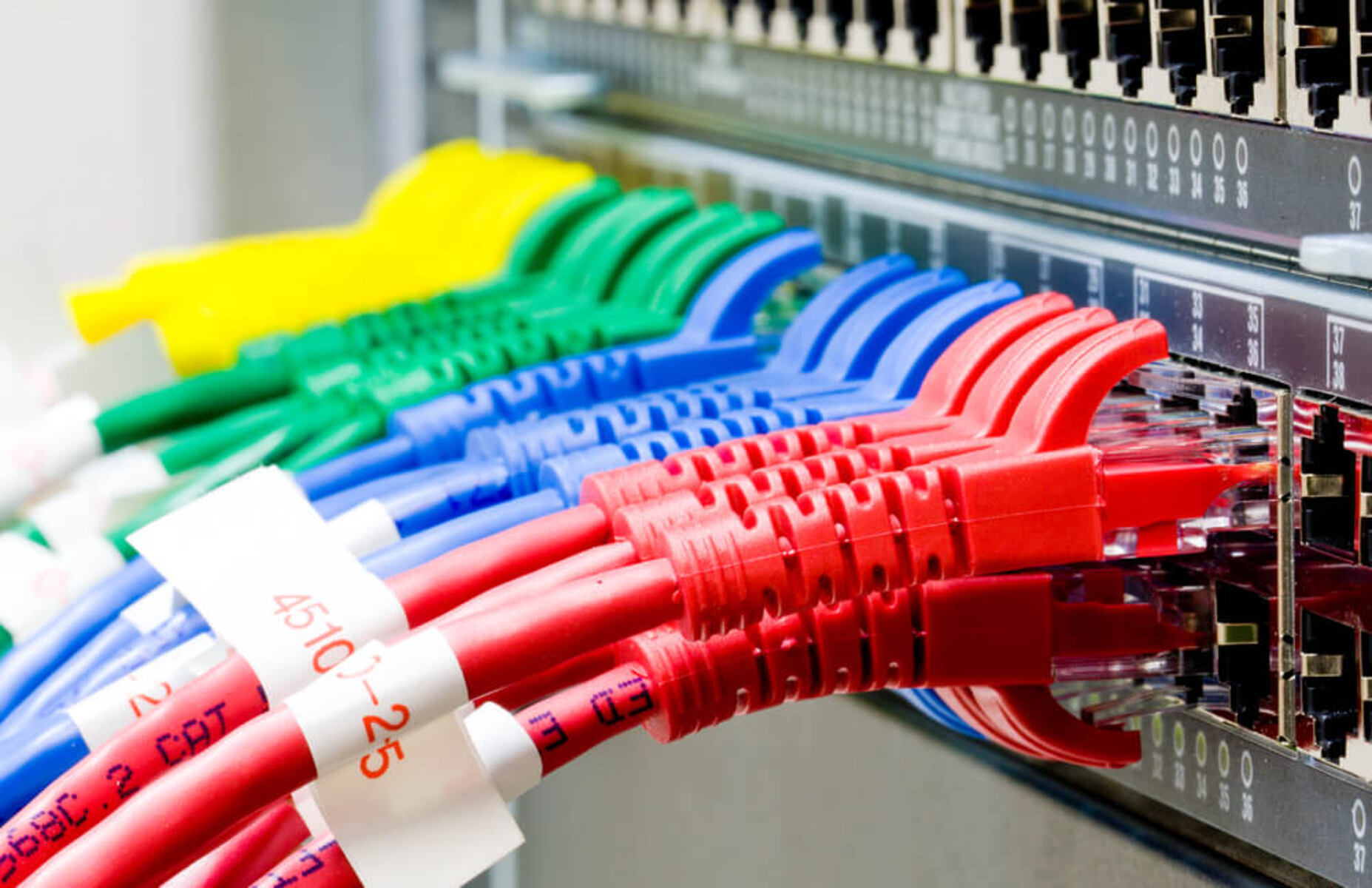Introduction
When it comes to maintaining a reliable and efficient network, the health of network switches is paramount. A network switch serves as a crucial component in directing and managing the flow of data within a network. However, like any electronic device, network switches can encounter issues that may impact their performance. Identifying whether a network switch is experiencing problems is essential for ensuring seamless network operations.
In this guide, we will explore the various indicators and methods to determine if a network switch is malfunctioning. By understanding the signs of a faulty network switch, you can take proactive measures to address any issues and maintain the integrity of your network infrastructure.
Ensuring the proper functioning of network switches is vital for businesses, organizations, and individuals relying on network connectivity for their daily operations. Whether it's for data transfer, internet access, or communication, a malfunctioning network switch can disrupt workflow and productivity. Therefore, being able to recognize the signs of a problematic network switch is crucial for preemptive troubleshooting and swift resolution.
As we delve into the intricacies of identifying a faulty network switch, we will cover physical inspection, LED indicators, network performance testing, connection issues, and troubleshooting and solutions. By the end of this guide, you will have a comprehensive understanding of how to discern if a network switch is experiencing issues and the steps to rectify any potential problems. Let's embark on this journey to unravel the mysteries of network switch health and functionality.
Physical Inspection
Conducting a thorough physical inspection of a network switch is the first step in determining its operational status. Begin by examining the exterior of the switch for any visible signs of damage, such as dents, cracks, or discoloration. Additionally, ensure that the switch is securely mounted and that there are no loose connections or cables. A physical inspection can reveal any obvious issues that may be affecting the switch’s performance.
Inspect the ventilation system of the switch to ascertain that airflow is unobstructed. Overheating can significantly impair the functionality of a network switch, leading to performance issues and potential hardware damage. Ensure that the cooling fans, if present, are operational and free from dust or debris. Adequate ventilation is crucial for maintaining the optimal temperature within the switch enclosure.
Furthermore, check the power supply and connections to verify that the switch is receiving the correct voltage and that there are no fluctuations in power. A faulty power source can result in intermittent switch failures and erratic behavior. It is essential to confirm that the power input is stable and meets the manufacturer’s specifications.
Inspect the network switch’s ports and interfaces for any signs of physical damage or corrosion. Damaged ports can impede network connectivity and data transmission. Additionally, examine the status indicators near the ports to ensure they are functioning correctly and are not indicating any errors or abnormalities.
By meticulously examining the physical attributes of the network switch, you can identify any visible issues that may be contributing to its malfunction. A comprehensive physical inspection sets the foundation for further diagnostics and troubleshooting to pinpoint the root cause of any potential problems.
LED Indicators
LED indicators on a network switch serve as valuable visual cues that can provide insights into the switch’s operational status and potential issues. These indicators convey vital information regarding network connectivity, port activity, power status, and error notifications. Understanding the significance of LED indicators is instrumental in diagnosing the health of a network switch.
Begin by observing the power LED indicator to verify that the switch is receiving power and is operational. A steady and consistent illumination of the power LED indicates that the switch is powered on and functioning as intended. Conversely, a flickering or non-illuminated power LED may indicate power supply issues or hardware malfunctions.
Next, examine the status of the link and activity LEDs associated with each port. These indicators provide real-time feedback on the connectivity and data transmission activity for individual ports. A steady link LED accompanied by intermittent activity LED flashes signifies a stable network connection with data being transmitted. However, if the link LED is off or the activity LED remains static, it may indicate port-specific issues or network connectivity problems.
Pay close attention to any error or fault LEDs that may be present on the switch. These indicators are designed to alert users to potential errors, malfunctions, or abnormal conditions within the switch. An illuminated error LED warrants immediate attention and further investigation to identify the underlying issue causing the error condition.
Some advanced network switches feature LED indicators for system diagnostics, temperature monitoring, and fan status. These indicators offer valuable insights into the overall health and environmental conditions within the switch. Anomalies in temperature or fan status LEDs can indicate potential overheating or cooling system failures, prompting proactive measures to prevent hardware damage.
Understanding the behavior and significance of LED indicators equips network administrators and users with the ability to interpret the status of a network switch at a glance. Regularly monitoring these indicators can aid in early detection of potential issues, allowing for timely intervention and maintenance to uphold the optimal performance of the network switch.
Network Performance Testing
Network performance testing serves as a critical method for evaluating the functionality and efficiency of a network switch. By conducting comprehensive performance tests, network administrators can assess the switch’s ability to handle data traffic, maintain consistent throughput, and minimize latency. These tests provide valuable insights into the switch’s performance under varying loads and real-world network conditions.
One of the fundamental performance tests involves measuring the throughput of the network switch. This test assesses the switch’s data transfer capabilities by transmitting a predefined volume of data between network devices and evaluating the speed and efficiency of data transmission. A noticeable degradation in throughput compared to the switch’s specified capacity may indicate performance issues or network congestion.
Latency testing is another crucial aspect of network performance evaluation. Latency measures the time it takes for data to travel from the source to the destination and back. High latency can lead to delays in data transmission, impacting real-time applications and overall network responsiveness. By analyzing latency metrics, network administrators can identify potential bottlenecks and latency-inducing factors within the network switch.
Furthermore, conducting stress tests on the network switch can reveal its resilience and stability under heavy data loads. Stress testing involves subjecting the switch to simulated high traffic scenarios to determine its ability to handle peak data volumes without experiencing performance degradation or packet loss. Identifying any anomalies or performance degradation during stress testing is crucial for preemptive maintenance and capacity planning.
Quality of Service (QoS) testing is essential for assessing the switch’s ability to prioritize and manage different types of network traffic. By simulating various types of data traffic, including voice, video, and critical data, network administrators can evaluate the switch’s adherence to QoS policies and its capacity to maintain service levels for different applications and services.
By systematically conducting network performance testing, administrators can gain a comprehensive understanding of the switch’s capabilities and limitations. These tests not only aid in identifying potential performance bottlenecks and issues but also facilitate proactive measures to optimize network performance and ensure seamless data transmission across the network infrastructure.
Connection Issues
Network switches play a pivotal role in facilitating seamless connectivity within a network. However, the occurrence of connection issues can disrupt the flow of data and impede communication between network devices. Identifying and addressing connection issues is essential for maintaining a robust and reliable network infrastructure.
One common indicator of connection issues is the presence of intermittent or unstable network connectivity. Devices connected to the switch may experience frequent disconnections or erratic behavior, leading to disruptions in data transmission and network accessibility. These symptoms often point towards underlying connection issues within the network switch.
Another noticeable sign of connection issues is the inability of network devices to establish or maintain stable connections with the switch. Devices may fail to obtain IP addresses, experience DHCP lease renewal failures, or exhibit limited or no network connectivity. These manifestations indicate potential issues with the switch’s port configuration, network address assignment, or communication protocols.
Furthermore, network devices connected to the switch may encounter slow or inconsistent data transfer rates, resulting in sluggish network performance. This can be attributed to connection issues such as duplex mismatches, port errors, or network congestion, all of which can hinder the efficient flow of data within the network.
Network switches experiencing connection issues may also exhibit port-specific anomalies, such as port flapping, where a port repeatedly transitions between an operational and non-operational state. Port flapping can disrupt network connectivity and lead to service interruptions for devices connected to the affected ports.
Additionally, the presence of network loops or broadcast storms can exacerbate connection issues within a network switch. These phenomena can result in excessive network traffic, leading to performance degradation, packet loss, and network instability. Detecting and mitigating network loops and broadcast storms is crucial for maintaining a stable network environment.
By recognizing the signs of connection issues within a network switch, administrators can initiate targeted diagnostics and troubleshooting measures to identify the root causes of these issues. Resolving connection issues is imperative for ensuring seamless network operations and fostering an environment conducive to efficient data transmission and network connectivity.
Troubleshooting and Solutions
Effectively troubleshooting and addressing network switch issues is essential for maintaining a reliable and efficient network infrastructure. When encountering potential problems with a network switch, administrators can employ various diagnostic techniques and implement targeted solutions to rectify the issues and restore optimal functionality.
One of the initial steps in troubleshooting network switch issues involves reviewing the switch’s configuration settings. Administrators should verify that the switch is configured in accordance with best practices, including appropriate VLAN assignments, spanning tree protocol (STP) configurations, and port settings. Misconfigurations can lead to connectivity issues and performance degradation, necessitating thorough configuration audits and adjustments.
Conducting comprehensive port-level diagnostics is crucial for identifying and resolving connectivity issues. Administrators can utilize network management tools to analyze port statistics, error counters, and traffic patterns to pinpoint potential port-specific issues, such as packet loss, CRC errors, or duplex mismatches. Resolving port-level anomalies can significantly enhance network performance and stability.
Performing firmware and software updates for the network switch is essential for addressing known bugs, vulnerabilities, and performance optimizations. Keeping the switch’s firmware up to date ensures compatibility with evolving network standards and protocols, while also incorporating critical bug fixes and feature enhancements.
Network administrators should leverage network monitoring and management tools to gain real-time insights into the switch’s operational status and performance metrics. These tools enable proactive monitoring of network traffic, device connectivity, and error notifications, facilitating early detection of potential issues and the implementation of preventive measures.
In cases of persistent network performance issues, administrators can consider implementing network traffic analysis and packet capture to identify anomalous traffic patterns, protocol anomalies, or security threats. Analyzing network traffic can reveal underlying issues affecting network switch performance and aid in devising targeted solutions.
Furthermore, collaborating with vendor support and engaging in community forums can provide valuable assistance in troubleshooting complex network switch issues. Vendor support can offer expert guidance, firmware recommendations, and hardware diagnostics, while community forums enable knowledge sharing and insights from peers facing similar network challenges.
By employing a systematic approach to troubleshooting and implementing targeted solutions, network administrators can effectively address network switch issues, optimize performance, and uphold the integrity of the network infrastructure. Proactive maintenance and diligent diagnostics are instrumental in ensuring a resilient and high-performing network environment.

























